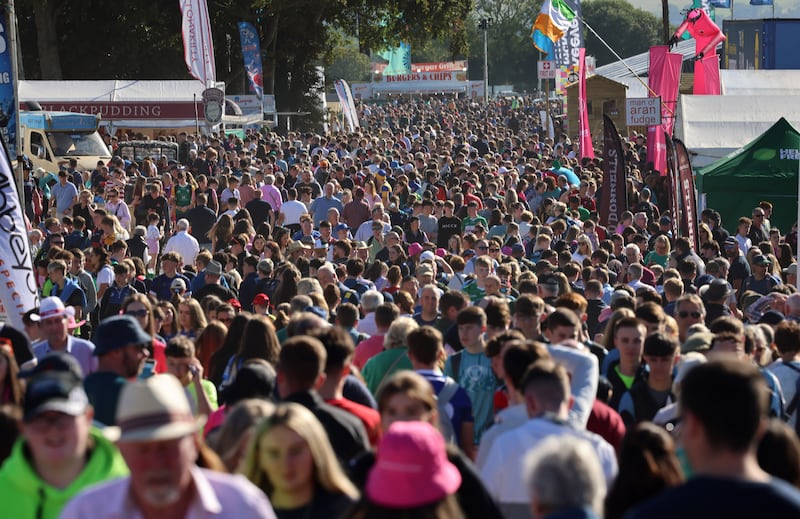The first thing to look for when trying to spot a good furrow is its straightness, and there should be no grass poking through the surface, said Gerry Reilly, pointing towards a section of freshly ploughed field.
“The scrapes have to be even. They all have to look the same. All your measurements have to be right,” he said.
Mr Reilly (68) was competing in a horse-drawn plough contest on the second day of the National Ploughing Championships in Ratheniska, Co Laois. Following in the footsteps of his father, Mr Reilly, from Claregalway, began ploughing at the national event in the mid-1980s or thereabouts.
Friendships are a big draw, but “of course everybody wants to win”, he added.
RM Block
The scorching sunshine that presided over the first two days of the event made the work more pleasant for the human ploughers, but the dry earth “pulls on the horses”, he said.
More than 75,000 people attended the first day of the ploughing festival, an increase of 9,250 on last year’s opening, which was affected by heavy rain. The makeshift streets lined with shops, exhibits and food stalls were jammed with visitors, including busloads of secondary-school students. Queues stretched around corners for whipped ice-creams, cookies and at the Lidl Farm experience, which seeks to find “Ireland’s fastest milker”.
Some quiet and stillness could be found in the ploughing fields. Mr Reilly said fewer people come to watch the horse ploughing than in the past, but “there is still a fair crowd”.
“Kids love to see the horses ploughing, but of course it wouldn’t be as popular as what it was ... If you do not get the youth involved it will die out,” he said.

Elsewhere, farmers who spoke to The Irish Times said inflated production costs and pressure to reduce fertiliser are key issues they are facing. Wexford suckler and sheep farmer James Taylor (32) said the price of lamb was good earlier this year and beef has “held its own” but these cannot keep up with input costs.
“Everything is going up, but it has not resulted in increased profits ... It is still very tough to farm full-time,” said Mr Taylor, who works as a full-time marketing executive alongside his farming.
Michael Carroll (72) worries about the financial penalty that comes with leaving his farm, in Camross, Co Laois, to his son. He wants a future government to “do away with the property gains tax” on farms, which will cost his son up to €80,000 while he “tries to make a few pounds from farming”.

A farmer all his life, Mr Carroll recalled making money from drystock farming “when things were cheap”. Now, he said, farmers have to spend “twice as much”.
“In the last five years we seem to be paying more for manure, more for everything. Your meal bill is high. The price of your plastic for wrapping your silage. Everything is against you.”
From the upcoming budget, John Connell (49), a suckler and pedigree cattle farmer in Co Meath, wants incentives to “get suckler farming back to where it was”.
“The dairy farming took off there over the last couple of years, but the suckler farmer is forgotten about,” he said.
- Sign up for push alerts and have the best news, analysis and comment delivered directly to your phone
- Join The Irish Times on WhatsApp and stay up to date
- Listen to our Inside Politics podcast for the best political chat and analysis

















